Annual Report
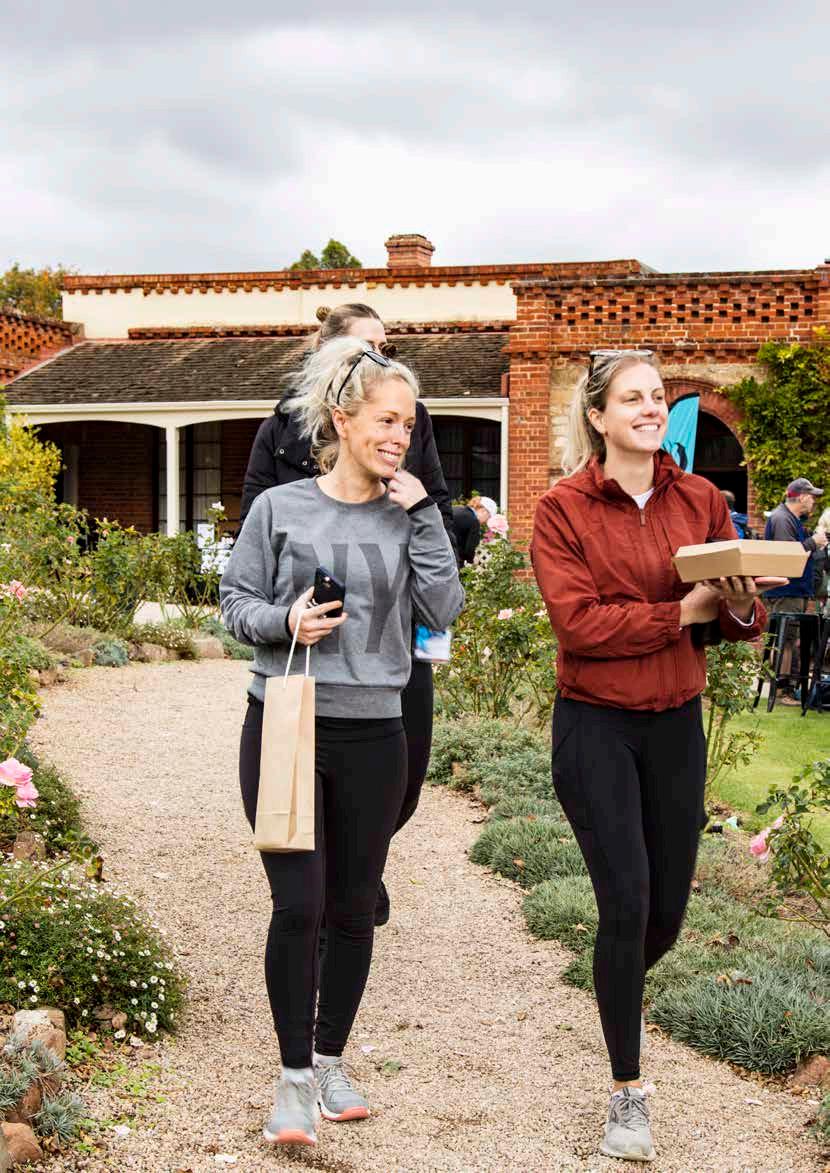


I was honoured to take on the role of President of the National Trust in November 2021, but a little daunted by the thought I had to follow on from Deborah Morgan. Deborah spent four years in the role and oversaw the Trust in a period when it obtained two significant grants from the Commonwealth Government and had to commence the implementation of those grants at the height of the COVID crisis. Her dedication and diligence in the role of President were commendable. She was, and remains, a strong advocate for both built and natural heritage and I extend the heartfelt thanks of the organisation to Deborah for her work.
The last financial year has been a mixed one for the Trust. The COVID-19 virus continued to lurk in the background interrupting a range of activities. Our Stangate and Beaumont House properties are popular venues for events like weddings and birthdays and in the first half of the year continued to suffer from the effects of cancellations, although bookings are now improving. Fortunately our dedicated staff and teams of volunteers across the state have soldiered on to keep the many Trust properties maintained and, where possible, open to the public.
The Labor Party came into power in March 2022 having promised to return Ayers House to the Trust if elected. Positive negotiations are continuing with the Heritage Minister, Dr Susan Close, regarding that return. The Trust has asked that we be given complete control and management of the Ayers House property and that our rights be enshrined by a separate Act of Parliament.
The Silver to Sea Way project has seen the successful restoration of the railway roundhouse at Peterborough and work is well underway with the collection and recording of stories which will be available by smart phones at each point along the way. Plans have been prepared for restoration works at the Trust’s museum in the former Port Pirie Railway station.
The Moonta Mines heritage trail project is well underway and I encourage people to visit and obtain a better appreciation of the enormous impact that the mine and the Cornish immigrant miners had on the development of the colony of South Australia.
The Trust’s nature reserves are one of our ‘hidden’ gems and while visitors are welcome, we also need to find the balance which ensures the natural environment within those reserves is not damaged. COVID-19 has changed the approach of many Australians to travel and recreation. The Trust is exploring ways to provide more experiential activities in and around its properties to cater for this need.
On behalf of the Council and myself I extend thanks to our Members, to our Patrons and Corporate partners, to the many generous donors and to our community of supporters. My personal thanks for their support and assistance also goes to my fellow Councillors, to the members of the Trust Committees, to the hard working branches and to our Chief Executive, Dr Darren Peacock and his team for all they have done in a somewhat trying period.
Paul Leadbeter President
The 2021-22 was a year of great highs and lows. In June 2021 the Trust was served with an eviction notice by the former Liberal Government, ending our 50-year tenure at Ayers House. Members were outraged by this decision and rallied as we initiated legal action against the government in July. We staged a number of meetings for members and won the support of the then Opposition and cross bench MPs to reverse the government’s decision and keep Ayers House in the care of the Trust.
Whilst the legal battle continued, we were forced to close the Ayers House Museum to the public in September. It was heartbreaking for members and volunteers to close the museum after 50 years of presenting the house and its collections to the public. Despite the public outcry we were forced to dismantle the museum and relocate the vast collections into storage, a process which took six months to complete.
More than 20,000 people signed petitions to Parliament to place Ayers House in the permanent care and control of the Trust. The Labor Opposition committed to doing that if it were elected, which happened in March. We are in negotiation with the new Government about an Act of Parliament that would guarantee permanent care and control of Ayers House by the Trust.
We are so grateful to the many people who rallied to the cause and helped us achieve a reversal of the appalling decisions made under the former Government. In that darkest hour for the Trust, it was your support that kept us going.
Among the highlights for the year, we commenced major works on our two largest ever conservation projects. As part of the Silver to Sea Way project we completed the restoration of the Peterborough Railway Roundhouse, securing the future of that 100-year old building that is the mainstay of Peterborough’s tourism economy.
We also commenced works at the Moonta Mines National Heritage site to restore the most significant heritage buildings there, in particular the iconic Engine Houses that powered the mines. The Silver to Sea Way and Moonta Mines projects will gather further momentum in 2022-23.
As ever we staged and hosted a wide range of events including opera at Z Ward, music recitals at North Adelaide, monthly open garden days at Stangate House and Garden, guided tours and walks and of course the annual Pioneer Women’s Trail Walk from Hahndorf to Beaumont.
Our amazing volunteers continued their committed service in caring for our gardens, buildings and collections, leading advocacy campaigns and providing great experiences for visitors. Our Council reconsidered our strategic directions under the leadership of new President Paul Leadbeter. Our staff continued to achieve more and more with their enthusiasm and creativity.
Thank you for all your brilliant effort and dedication to the cause.
Dr Darren Peacock Chief Executive Officer
The Strategic Plan sets the direction and high level objectives for the Trust.
For 2022, six strategic objectives have been identified by the Council:
• Being a respected, influential and independent voice for heritage conservation.
• Promoting best practice in heritage protection and conservation.
• Increasing the relevance of built, cultural and natural heritage in the community.
• Working through collaboration, teamwork and partnership.
• Managing our assets for sustainability.
• Building a robust, vibrant and resilient organisation.
The business planning framework is a tool for planning the activities of our programs, sites and branches, including the development of asset management plans and destination management plans for major sites.
Seven key result areas can be used to set and measure local objectives across conservation, destinations, experiences, learning, advocacy, information and governance, finance and administration.
By applying a consistent planning framework aligned to the Strategic Plan, the Trust will be more effective in achieving its purpose in a co-ordinated and integrated way.
To protect, promote and conserve South Australia’s natural, built and cultural heritage.
Integrity
Innovation
Conservation
Advocacy
Core Activities
Adaptability
Authenticity
Community
More people experiencing, enjoying and valuing our heritage.
Sustainability
Engagement Values
Vision
Building a robust, vibrant and resilient organisation.
Managing our assets for sustainability.
Working through collaboration, teamwork and partnership.
Increasing the relevance of built, cultural and natural heritage in the community.
Promoting best practice in heritage protection and conservation.
Being a respected, influential and independent voice for heritage conservation.
Financial strength Education
Developing skills Improving communications
Valuing our staff and volunteers Asset management
Member and public engagement Tourism opportunities
Effective advocacy Strategic alliances

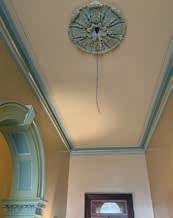
The National Trust of South Australia was established as an independent community advocate for the protection and preservation of our built, natural and cultural heritage. For 67 years, the Trust has campaigned to strengthen legislation, improve government policy, raise public awareness of threats to our heritage and to protect places at risk of destruction or harm. Effective public advocacy is key to our mission as an organisation.
In 2021-22 we found ourselves on a heritage battlefront very close to home. When the former Liberal Government decided to evict the National Trust from Ayers House after 50 years as its principal custodian, we quickly mobilised public support to oppose the conversion of the house into government offices and extended private catering facilities. Trust members and the public rallied strongly as we mounted the campaign to Keep Ayers House for the People. More than 20,000 people signed our petitions to Parliament and many others pledged support through letters and donations. Opposition and cross bench MPs committed their support for the National Trust’s permanent custodianship of Ayers House. The then Labor Opposition took a commitment to the election in March 2022 to legislate for Ayers House to be placed under the permanent care and control of the National Trust and were duly elected. We look forward to working with the new government on the passage of that legislation and the opportunity to reinstate Ayers House as a community managed public building and tourist destination.
Prior to the State election, we ran major policy forums on heritage and planning issues including online pre-election forums with candidates. Our first public forum, held in October at UniSA, presented the Trust’s 50-year plan for metropolitan Adelaide, authored by former President, Professor Norman Etherington AM. The plan and the forum aimed to restart a public conversation about the role of planning in shaping the future of our urban environment after the debacle of the implementation of the State Government’s Planning and Design Code.
The all-day forum Adelaide 2070: Planning Beyond Tomorrow featured presentations by planners and experts in transport, heritage and climate change. The talks were thought provoking and recordings are available online along with the original report.
This will provide the foundation for our work on the future of Adelaide in a warming, overcrowded and carbon constrained world.
In December we launched the Save Our Trees campaign which is highlighting the loss of tree canopy in the urban environment. Although estimates vary, there is a clear and increasing threat to the future of our urban trees which will only be exacerbated by the inadequate protections and incentives for preserving trees and greenspace in the Planning and Design Code.
Once again, we found ourselves defending Martindale Hall in the Clare Valley for the people of South Australia- to whom it was gifted- when the former government introduced legislation to enable its privatisation. Despite pre-election commitments to the contrary, the former Liberal government passed legislation in the Lower House to remove protections which keep the Hall in public hands. We campaigned strongly for the preservation of the Hall for the benefit of the community, winning the support of thousands through our petitions to Parliament. Fortunately, the legislation failed to pass the Upper House with opposition from Labor and the Greens and so the Hall remains safe, for now.
Below: Before and after the Ayers House eviction.
The protection of our heritage requires skill and imagination. It is all too easy to dismiss the value of older buildings because neglect or the passage of time has left them in need of conservation or restoration work. New construction appears to be easier and potentially cheaper. However, over time, the physical preservation of our existing buildings has many economic, environmental and cultural benefits which makes heritage protection and conservation worthwhile and cost-effective.
The Trust aims for best practice in the conservation of its own properties and seeks to assist others to do the same. Skills in a number of traditional building trades are in short supply nationally. Three years ago, we launched a new initiative – the Australian Artisan Trades Academywhich helps the Trust and other heritage building owners to undertake cost effective conservation projects and also to train the next generation of tradespeople in heritage conservation skills.
In 2021-22 we completed conservation works around the state at Collingrove, Overland Corner, Glencoe, Penola and Mount Gambier with financial assistance provided by the State Government.

The Academy has developed a range of partnerships to deliver training and learning programs in traditional trades. Stoneideas have become our building partner for conservation works, delivering a range of projects and working with us to document the typical issues and interventions required for heritage buildings in South Australia. We have been working with new technologies at Moonta such as laser surveying and ground penetrating radar to assist in the planning and execution of building works. We also called on the specialist expertise of Stone Initiatives to match the original mortars at 150-year-old Hughes’ Engine House and Chimney (top right).
We are working with prominent heritage architects Swanbury Penglase on our major projects at Moonta and Port Pirie. Leading South Australian construction engineering service McMahons undertook the restoration of the Peterborough Railway Roundhouse for us as part of the Silver to Sea Way project. This major project has brought new life to this 100-year-old heritage building and tourist attraction.
For many years we have also helped other building owners to fundraise for heritage conservation projects. In 2021-22, through the South Australian Heritage Foundation, we helped to raise more than $2m for heritage conservation projects. These funds help to support and apply best practice planning and skills to conservation works large and small at community owned buildings around the state. In 2021-22 we commenced five new conservation appeals on behalf of other organisations.
Our 24 nature reserves also benefit from best practice principles in bush care, including:
• Controlling pest species
• Addressing fragmentation of native vegetation
• Restoring the health of water resources and aquatic ecosystems

• Preserving urban and peri-urban vegetation
• Addressing climate change
• Enhancing community participation
• Increasing investment in the environment
We also continued work on a climate resilience strategy to address the impacts of climate change. We worked in partnership with a range of non-government environmental organisations to share ideas and best practice.
As always, we continue to advocate, undertake and support best practice in managing, preserving and interpreting built and natural heritage places and support the efforts of others to do the same.
We aim to build interest and support for heritage conservation by designing and delivering engaging experiences at heritage places for people of all ages. Our goal is to ensure that those who visit our places or who enjoy another experience, such as a special event, tour or performance, or who use our digital platforms, deepen their understanding of our heritage and develop a sense of its value and relevance to them. We hope that positive experiences of heritage, from an early age, will encourage future generations to care for the places, stories and artefacts we have preserved.
It was with a heavy heart that we were forced to close the Ayers House Museum in September after 50 years. In that time hundreds of thousands of people, including many tourists and school children, had enjoyed the special experiences of the house and the generous hospitality of our dedicated volunteers. The loss of the museum is a significant blow to the Trust and to the cultural life of Adelaide. In its last year the museum had drawn record numbers of school visitors who now lack an opportunity to explore such a unique and remarkable place.
Although much of 2021-22 was taken up with dismantling the Ayers House Museum and relocating its contents, we continued to provide new experiences and events at other venues. At Stangate House and Garden in the Adelaide Hills we commenced monthly open garden days and continued to offer art and design workshops in the beautiful house and grounds.
Z Ward continued to attract large numbers of visitors, including high school students studying English and Psychology. It also staged a sell-out opera performance of Edgar Allan Poe’s The Tell-Tale Heart by State Opera South Australia, a compelling use of this powerful space. Despite fluctuating COVID-19 restrictions, guided tours of the Old Adelaide Treasury and our regular city walking tours once again proved popular.

The North Adelaide Baptist Church continues to host a diverse program of music with lunchtime concerts by Recitals Australia – livestreamed over the internet- and special performances in the church by Celia Craig’s Artaria and Adelaide Baroque
In the wake of COVID-19, outdoor activities remain particularly popular, with excellent patronage of our nature reserves across the state, some of which have been enhanced with new signage and information brochures.
The Kingston branch staged the Shine on Kingston! festival over a week in January, celebrating the Cape Jaffa Lighthouse with a stunning night-time illumination of the lighthouse and a range of public activities and events. Shine on was a tremendous success and showed the appetite for night time activities, especially for families, at this summer holiday spot. Moonta followed on in the festival theme with the inaugural Flame Festival over three nights in May, produced in conjunction with the Copper Coast Council.
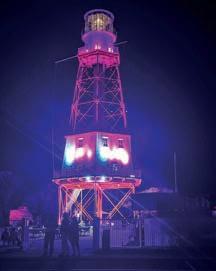
The annual Pioneer Women’s Trail Walk from Hahndorf to Beaumont once again attracted large numbers of walkers who enjoyed extended food and entertainment options at the end of their trek. Monthly open days at the Tea Tree Gully Heritage Centre and Beaumont House provided a warm welcome and excellent refreshments.
Top: The Tell-Tale Heart at Z Ward. Bottom: Shine on Kingston! festival.
We work in partnership with a wide range of organisations and individuals. In 2021-22 we continued to build our existing partnerships and to develop new ones. Our collaborations and commercial partnerships help us to do more, connect us with new people and communities and enable us to exchange expertise and resources. As these partnerships develop, new opportunities arise to promote the work of the Trust and to undertake new initiatives.
Partnerships underpin the major projects underway–the Silver to Sea Way touring route from Port Pirie to Broken Hill and the Moonta Mines National Heritage project. We are working with local councils and Aboriginal nations to develop new visitor amenities and experiences with funding support from Commonwealth Government grants.
Both of these major projects- worth $11m over two years- enable us to work with a range of industry leaders in construction, conservation, design, interpretation, media production and visitor experience. The result will be a whole new range of heritage experiences stretching from Moonta to Port Pirie, Peterborough and, eventually, on to Broken Hill.
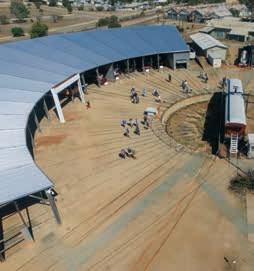
In March we completed the works at the Peterborough Railway Round House, a building owned by the District Council of Peterborough and the centrepiece of Steamtown, the heart of the town’s tourism offering. Through our work with the council and the Silver to Sea Way project we have given the 100-year-old heritage building a new lease of life, securing its future as a tourism magnet for the town and region.
Similarly, our plans for the former Port Pirie Railway Station and Customs House are being developed as part of the Silver to Sea Way project in conjunction with the community and the local council to bring new life to buildings that have been cared for by members of the National Trust for 50 years.
As we developed new concepts for Collingrove in the Barossa Valley and for a redevelopment of the former Cape Jaffa Lighthouse as the Kingston Beacon tourism destination, we worked with a range of local stakeholders to envisage the benefits of the proposed developments for their local communities. Both of those projects were submitted for funding under the Building Better Regions Fund.
We continued the Composer in residence Prelude program established by the Australia Council as we hosted our sixth composer, Anne Cawrse, who took up her residency at the North Adelaide Baptist Church in the thriving music performance centre emerging there.
Recognising the value of international networks, we regularly work with members of the International National Trusts Organisation (INTO). We took an active role in the development of the INTO Places program which gives our members free or discounted entry to more than 1200 National Trust properties around the world. We continue to participate in the global Climate Heritage Network to identify best practice approaches to reducing carbon emissions and tackling climate change.
We celebrated the final Australian Marmalade Awards with the successful production by Beerenberg Farm of a limited run of the 2020 champion Australian marmalade created by Julie Rubenhold. It was an exciting moment to behold the creation of Julie’s sublime orange and yuzu blend.
Top: Champion Marmalade.
Bottom: Peterborough Railway Round House.
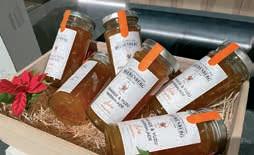
Our assets comprise the capital, financial and human resources that underpin our efforts to achieve our purpose. Our property assets, totalling more than 90 built heritage places and nature reserves were revalued at more than $46m in 2021-22, an increase of $11.5m on the previous 2016 valuation. Sustaining such a portfolio is a major challenge, one which the Trust has met with ingenuity, resourcefulness and dedicated hard work for more than 65 years.
In 2021-22 we continued the most extensive program of capital works in the history of the Trust. The previous year we had begun work on a long-term strategy for developing sustainable management plans for our major properties. Traditionally, the management of built heritage properties has been undertaken through the development of Conservation Management Plans, with a strong emphasis on physical conservation works.
While conservation works are inevitable and essential, the Conservation Management Plan methodpioneered by the National Trust in the 1980s - no longer meets the need for long-term planning to ensure sustainability and the achievement of strategic outcomes. Simply conserving a building is not a sufficient end in itself. There is much more to sustainability than just preserving a building’s fabric. Social, cultural, economic and environmental factors also need to be considered.
We have developed a new methodology based on the principle of regeneration and the work of heritage economist Donovan Rypkema to guide our strategic planning for the future of our properties. Our first regeneration project plan has been completed in respect of Collingrove, an historically significant property in the Barossa Valley, donated to the Trust by the Angas family in the 1970s. We are now seeking external funding to implement that plan.
Work has continued at the North Adelaide Baptist Church to restore interiors and floors and upgrade services and guttering. Additional works have been identified for the restaurant (former manse) building and for the former caretaker’s residence. A full maintenance plan and ten-year master plan for the whole site is being developed.
At Beaumont House, work has been undertaken on the roof and gutters and to refit some spaces to house the delicate costume collection relocated from Ayers House.

Our new maintenance planning regime will undertake regular audits of the condition of our buildings and plan for proactive maintenance. Where possible, we will look for opportunities to build training and learning experiences into the works program.
In coming years, regeneration plans will be developed for more of our properties as we establish new use cases and business models to sustain their operation and maximise public access and participation in their conservation.
As we develop these plans, we will consider all options for potential future use/s, thoroughly assess conservation requirements, identify and deliver training programs during building works and look for partnerships with other community or commercial partners to maximise the future utilisation and sustainability of these places.
The National Trust has its roots in the commitment of our founding members to defending and caring for the places, artefacts and traditions that have enduring cultural significance both now and into the future. To fulfill our mission, we need a strong and resilient organisation.
The COVID-19 pandemic has for two years presented multiple challenges to our operations, finances and future planning. We have learned to be adaptable and to discover the opportunities in a highly volatile situation. This has taken a lot of effort from volunteers and staff to cope with a high degree of uncertainty and change. As a result, we are more agile and responsive to change.
In 2021-22 we also dealt with the blow of being evicted from Ayers House after 50 years. This was highly distressing for the people who had given so much to create and maintain the house, including some volunteers who had worked there for decades. The disrespect shown to them and to the Trust was very upsetting after all we had done over 70 years to preserve Ayers House for the people.

In the face of this, the resilience shown by our people throughout this difficult time has been remarkable. We did come through the painful and exhausting process of dismantling Ayers House. We continue to learn to adapt to those things that may have been permanently changed by the pandemic.
Since COVID-19, we have certainly become a more digital, mobile and networked organisation. As video conferencing has become the norm for meetings, we have learned that we can work, collaborate and share effectively across distances. Many of our meetings are now a ‘hybrid’ of on site and online attendance, breaking down distance barriers across the state and around the world.
We have been using broadband connections to work and meet remotely and to stream data and entertainment. Being connected to the Internet has never been more important. We now have high speed connections between state office locations at Beaumont and North Adelaide and a VOIP phone system connecting all staff. We are awaiting the connection of high-speed fibre at North Adelaide.
Volunteering has changed too. Some long-standing volunteers have decided to hang up their boots. We thank them for their service. We have begun recruiting volunteers for specific project opportunities, including digital volunteering and we continue to welcome participants in our corporate volunteering program taking on some arduous work in our nature reserves. By bringing people in even for a one-day volunteering opportunity, new people learn about the work of the Trust and how they can contribute to it. We continue to run an internship program with students and recent graduates from the state’s three main universities.
In 2021-22 we streamlined our financial systems and processes and have begun to integrate financial information across the Trust. There is significant potential to simplify and make our financial management more efficient, making use of ‘cloudbased’ information technology for financial transactions and reporting.
Our financial position also underpins our organisational resilience. Despite the effects of COVID-19 we remain in a strong financial position overall, with our net assets climbing to a record amount of $51m. Significant Commonwealth Government funding for new projects provides exciting opportunities for developing new approaches and experiences at our sites.
In the coming year we will continue to develop our organisational capabilities through training, innovation and the use of new technologies in our work. Most of all we will continue to value our people and to ensure that their work with the Trust contributes to their wellbeing, personal and professional development.
National Trust branch members preserve and manage buildings, reserves and collections throughout South Australia.
Some present public programs through museums, tours and events. Other branches are primarily focussed on advocacy work to protect heritage places and most participate in local as well as state-wide events.
Burnside Gawler Port of Adelaide Tea Tree Gully Ceduna Cleve Koppio Streaky Bay Tumby Bay Whyalla
Auburn Burra Clare Jamestown Port Pirie Barmera Overland Comer Renmark Waikerie
Beachport Glencoe Keith Kingston SE Millicent Mount Gambier Naracoorte Penola Robe
Coromandel Valley Goolwa Hahndorf Kingscote KI Mount Barker Penneshaw Port Elliot Strathalbyn Victor Harbor Willunga
Ardrossan Central Yorke Peninsula Kadina Minlaton Moonta Wallaroo
The Trust manages 24 nature reserves across South Australia representing a variety of ecosystems and encompassing a total area of approximately 1, 500 hectares.
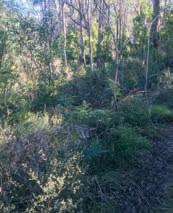
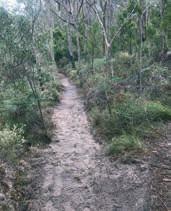
This has been a fun and productive year on NTSA nature reserves. A wet winter and spring have triggered the best blooming of orchids in years. Our usual stable of hard-working volunteers have made serious inroads into weed issues and corporate volunteers performed much-needed track work, improving access for the public who are visiting our beautiful reserves in increasing numbers.

Environmental weeds continue to be our biggest management issue. Without continual maintenance, many of our reserves would become overrun by exotic invaders and our native plants would dwindle. We use minimal disturbance bush care techniques, whereby weeds are removed with the least disturbance possible. This allows native species to quickly fill the space created and reduces the opportunity for weed reinvasion. Our volunteers are very experienced in this method, and generally have a great array of other skills as well.
We have been most fortunate to receive a number of grants this year that have enabled us to provide volunteer training, equip volunteers with good quality tools, and further, employ contractors to tackle some of the really tough weed issues. For example, mature Portuguese Heath is a very tough weed, and its tubers must be smashed out with sledgehammers. This isn’t always the best use of our skills, nor of our sometimes elderly volunteers. Contractors can take on such tasks, and our volunteers can take care of things after that by removing weed seedlings as they attempt to return. We are always looking for more volunteers. Volunteering on nature reserves is good for the body and mind, and it is always a wonderful experience spending time in these beautiful places. Our corporate volunteers are highly valued too! They contribute an enormous amount in a short period of time, enjoy fresh air and it’s a great team-building exercise.
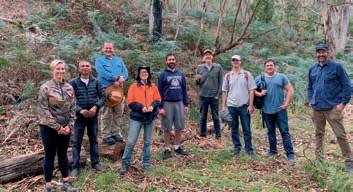
We were most fortunate to receive a donation from the proceeds of an open garden near Engelbrook Reserve. This money allowed us to create and erect signs providing flora and fauna identification to inform visitors. Such signs, in conjunction with self-guided walks with points of interest, is part of our mission to encourage visitors to reserves and provide the opportunity for them to learn while they are there. Providing a quality visitor experience is considered core business for us, as it increases awareness of the importance of biodiversity and of the work that we do by protecting and maintaining our nature reserves. With the biodiversity of South Australia in decline, our role in preserving high-quality native vegetation is more important than ever.

The National Trust of South Australia is a membership-based community organisation, which relies on the support of its members for membership funds, for participation in advocacy campaigns and in supporting public programs and events. The generosity of members and volunteers enables the Trust to achieve its goals and helps promote the conservation of the natural, built and cultural heritage assets of South Australia.

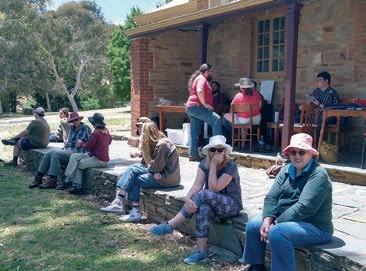
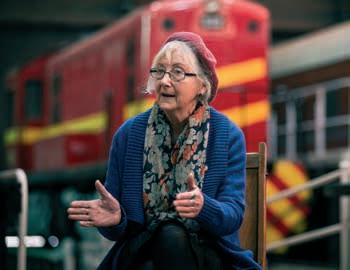
As at 30 June 2022 the Trust had 2,620 memberships, many of which are household memberships consisting of more than one person. There were 90 new memberships in 2021-22. Member benefits include free entry to National Trust properties world-wide and a quarterly magazine about South Australian heritage issues and innovation.
Volunteers are a vital part of the organisation. In 2021-22 more than 1,000 volunteers across the State generously donated many thousands of hours of work to maintaining and looking after our National Trust collections, reserves and buildings and to managing tours and events promoting awareness of the rich heritage of South Australia. The economic value of this contribution can be estimated at more than $4.5m annually.
COVID-19 has disrupted many volunteering activities and depleted our volunteer numbers. We have responded by introducing new ways to volunteer, with corporate volunteering, digital volunteering and event volunteering. In this way, we provide a diverse range of volunteering opportunities. More than ever, we appreciate the invaluable work of our volunteers and thank them for their generosity and dedication to the work of the Trust.
The National Trust of South Australia recognises its volunteers with service and achievement awards. Service Awards are made for 10, 15 and 20+ years of service with the Trust. Achievement Awards are made for a heritage related project or other achievement. The President’s Award is awarded for outstanding service to the Trust.
George Hobbs, JP
George is a global National Trust enthusiast. He is a long-standing member of the NTSA and is a life member of Scotland’s National Trust. He was elected to our Council in 2013 and held the role of Vice President for four years from 2017 and served as the chair of our Australian Artisan Trade Academy and of our Cultural Heritage Advisory Committee. George was instrumental in having a new batch of our brass wall plaques manufactured. He has many useful connections in Australia and the UK and has assisted the Trust by forging new relationships with Dulux, RAA and the Engine Shed in the UK.
In 2018, Bev won three gold and a National Champion award in the marmalade festival. She has continued making the “Coromandel” marmalade as a fund-raising activity solely to benefit our Branch. She has become affectionately known by many as the “Marmalady”.
Lester is an enthusiastic volunteer of the Naracoorte branch. He has worked tirelessly on numerous activities in maintaining and building of many enterprises over the last 4 years. Being involved in agriculture and farming all his life, Lester is a knowledgeable and capable asset.
Rodney Dutschke – 15 years
Rodney is a joint curator and has been a committee member with the Ardrossan Museum since 1973. In the early stages of the museum, Rod assisted with the refurbishment of the building, including the cementing of the floor and re-roofing.
He continues to do all the minor maintenance tasks and has a special interest in farming and farm machinery. Rod has assisted in the collection, repair and display of tractors and agricultural machinery.
Freda Pink – 20+ years Freda joined the NTSA in 1966 and was a foundation member of the Clare Museum. She was a guide at Martindale Hall whilst at Clare, and held roles as secretary, treasurer and was on many sub-committees at both branches.
Freda was awarded an Honour Award in 1997 and following a move to Ardrossan in 2001, she represented Ardrossan Museum on the Central Yorke Peninsula committee and was Chairperson from 2009 until she retired in 2012.
Kenneth Knight – 15 years
Ken has been a valued volunteer at the Strathalbyn museum now for 15 years. During that time he has used his excellent building skills on most of the complicated projects that have been accomplished at the museum.
Heather Everingham – 20+ years
Management team member, catering gatherings, historical information on early settlers and guided tours for more than 30 years.
Don John – 20+ years
Kevin Jenke – 20+ years
Geoff Kolberg – 20+ years
Robert Tucker – 20+ years
John Steed – 20+ years
Ben Gartery – 15 years, and Allan Freak – 10 years
Restoration of old vehicles and maintenance.
Natalie Letton – 15 years
Organising old photos to digital files.
Dave Cooper – 10 years
Dave has been a Chairperson, management member and guided tours.
Monica Cooper – 10 years
Management member, cataloguing historical items and catering for group tours.
Llewyn Davies – 10 years
Converting photos to digital files.
Margaret Duggin – 10 years
Catering, flower arranging and historical displays.
Ian Newland – 10 years
Management member, irrigation of property, other horticultural jobs and supervision of other volunteers.
ABC Radio Adelaide
Adelaide Baroque
Adelaide City Council
Adelaide Hills Council
Adina Treasury Hotel Art Gallery of South Australia
Australian Antique & Art Dealers Association
Beerenberg Farm Bundanon Trust Burnside Council Burnside Historical Society
Celia Craig Children’s University Community Alliance
Conservation Council of South Australia
Conservation Volunteers Australia
Construction Industry Training Board Copper Coast Council Country Women’s Association Dalemain Estate, UK Department of Environment and Water DuluxGroup Regional Council of Goyder Greening Australia
History Teachers Association of South Australia
History Trust of South Australia Music SA National Australia Bank Olives SA
Piper Alderman lawyers Recitals Australia SA Open Gardens Scheme South Australian Nature Alliance Stone Ideas
Theodore Bruce Auctions Thyne Reid Foundation Trees For Life
Victoriana Society of South Australia Volunteering SA and NT Wattle Range Council Wines by Geoff Hardy
In 2013 the former President, Professor Norman Etherington AM, initiated a patron program for the National Trust of South Australia. Over 8 years the Trust has welcomed the support of more than 60 individuals, couples and families. In 2021-22, many current patrons renewed their commitment and several new patrons joined the program. We greatly appreciate their support.
Sir George Kingston Patrons
Mr Derek & Mrs Carlsa Carter
Prof Norman Etherington AM & Prof Peggy Brock AM
Mr Richard Harvey AM
Mrs Patricia & Mr Edwin Michell
Mrs Deborah Morgan Mrs Susan Morgan Edmund Wright Patrons Ms Gabrielle Iwanow
Colonel Light Patrons
Mr Marcus Beresford
The Hon Judge Michael Boylan QC
Mrs Barbara Brummitt Mrs Elaine Davies Mr James Harvey Mr Paul Leadbeter
Mr Skip & Mrs Lilly Lipman Mr Hugh & Mrs Fiona MacLachlan OAM Dr Darren Peacock Mrs Josephine Prosser Dr David Shannon
Michael Abbott AO QC
Cavill Power Products Pty Ltd
Mrs Anne Jolly†
Mr Robert (Bob) Piper AO† & Lady Porter†
Mrs Eve Shannon-Cullity†
Mrs Marion W Wells†
Mr Alastair Angas†
Mrs Margaret Bennett
Mrs Skye McGregor
Mr Robin & Mrs Helen Greenslade Mrs Cecily Harvey† Mr Anthony Hurl
The Hon Dr Diana Laidlaw AM Mr John P Maddern†
The Hon Rod & Mrs Leonie Matheson
Mr Peter Morgan†
The Hon Dr Kemeri Murray AO†
Mr John Phillips
Mrs M P Schroder
Mrs Sue Tweddell
Mr Cedric Wells† OAM Mr R J Whitington QC
Born in 1931 and educated at the University of Adelaide and St Mark’s College, Ian Wall co-founded technology company Codan in 1959. Codan has been a global success story selling communications equipment, metal detectors and other electronic equipment around the world from a base in Adelaide. Ian and his wife Pamela have been notable philanthropists for many causes. They have both been awarded a Medal of the Order of Australia (OAM) for their philanthropy. The National Trust honours Ian’s life and achievements and thanks him and Pamela for their generosity.
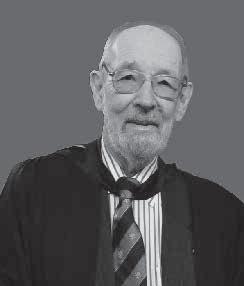
Mr Paul Leadbeter (President)

Ms Millie Nicholls (Vice President)
Mr Tully Brookes
Ms Elaine B Davies
Ms Alice Fitch
Mr James Harvey
Ms Gabrielle Iwanow
Mr Steve Larkins OAM

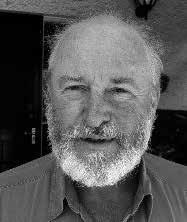

Mrs Caren Martin
Ms Alison Stillwell OAM
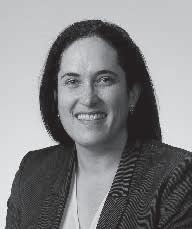

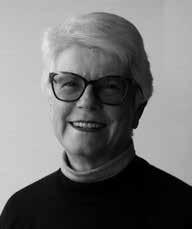
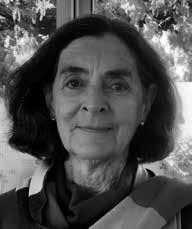

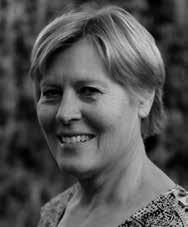
Ms Di Wilkins


We have audited the financial report of National Trust of South Australia (“the entity”) which comprises the Statement of Financial Position as at 30 June 2022, the Statement of Profit or Loss and Other Comprehensive Income, the Statement of Changes in Equity and the Statement of Cash Flows for the year then ended, Notes to the Financial Statements, including a summary of significant accounting policies, and Council’s Declaration.
In our opinion, the accompanying financial report of National Trust of South Australia is in accordance with the Australian Charities and Not-for-profits Commission Act 2012 and the National Trust of South Australia Act 1955; including:








(i) giving a true and fair view of the entity’s financial position as at 30 June 2022 and of its financial performance and its cash flows for the year then ended; and (ii) complying with Australian Accounting Standards – Simplified Disclosures and the Australian Charities and Not-for-profits Commission Regulations 2013.
We conducted our audit in accordance with Australian Auditing Standards. Our responsibilities under those standards are further described in the Auditor's Responsibilities for the Audit of the Financial Report section of our report. We are independent of the entity in accordance with the independence requirements of the Accounting Professional and Ethical Standards Board's APES 110 Code of Ethics for Professional Accountants (the Code) that are relevant to our audit of the financial report. We have also fulfilled our other ethical responsibilities in accordance with the Code.
We believe that the audit evidence we have obtained is sufficient and appropriate to provide a basis for our opinion.
The Council Members are responsible for the other information. The other information comprises of the information in the Council’s report for the year ended 30 June 2022, but does not include the financial report and our auditor's report thereon.
Our opinion on the financial report does not cover the other information and accordingly we do not express any form of assurance conclusion thereon.
In connection with our audit of the financial report, our responsibility is to read the other information and, in doing so, consider whether the other information is materially inconsistent with the financial report or our knowledge obtained in the audit or otherwise appears to be materially misstated.
If, based on the work we have performed, we conclude that there is a material misstatement of this other information, we are required to report that fact. We have nothing to report in this regard.

The Council members of National Trust of South Australia are responsible for the preparation of the financial report that gives a true and fair view in accordance with Australian Accounting Standards – Simplified Disclosures, the Australian Charities and Not-for-profits Commission Act 2012 and the National Trust of South Australia Act 1955. This responsibility includes such internal control as the Council members determine is necessary to enable the preparation of the financial report that gives a true and fair view so that it is free from material misstatement, whether due to fraud or error.
In preparing the financial report, the Council members are responsible for assessing the entity’s ability to continue as a going concern, disclosing, as applicable, matters related to going concern and using the going concern basis of accounting unless the Council members either intend to liquidate the entity or to cease operations, or have no realistic alternative but to do so.
Our objectives are to obtain reasonable assurance about whether the financial report as a whole is free from material misstatement, whether due to fraud or error, and to issue an auditor’s report that includes our opinion. Reasonable assurance is a high level of assurance, but is not a guarantee that an audit conducted in accordance with the Australian Auditing Standards will always detect a material misstatement when it exists. Misstatements can arise from fraud or error and are considered material if, individually or in the aggregate, they could reasonably be expected to influence the economic decisions of users taken on the basis of this financial report.
As part of an audit in accordance with the Australian Auditing Standards, we exercise professional judgement and maintain professional scepticism throughout the audit. We also:
















Identify and assess the risks of material misstatement of the financial report, whether due to fraud or error, design and perform audit procedures responsive to those risks, and obtain audit evidence that is sufficient and appropriate to provide a basis for our opinion. The risk of not detecting a material misstatement resulting from fraud is higher than for one resulting from error, as fraud may involve collusion, forgery, intentional omissions, misrepresentations, or the override of internal control.
Obtain an understanding of internal control relevant to the audit in order to design audit procedures that are appropriate in the circumstances, but not for the purpose of expressing an opinion on the effectiveness of the entity’s internal control.
Evaluate the appropriateness of accounting policies used and the reasonableness of accounting estimates and related disclosures made by the Council members.
Conclude on the appropriateness of the Council members’ use of the going concern basis of accounting and, based on the audit evidence obtained, whether a material uncertainty exists related to events or conditions that may cast significant doubt on the entity’s ability to continue as a going concern. If we conclude that a material uncertainty exists, we are required to draw attention in our auditor’s report to the related disclosures in the financial report or, if such disclosures are inadequate, to modify our opinion. Our conclusions are based on the audit evidence obtained up to the date of our auditor’s report. However, future events or conditions may cause the entity to cease to continue as a going concern.

















Auditor’s Responsibilities for the Audit of the Financial Report (Cont)
Evaluate the overall presentation, structure and content of the financial report, including the disclosures, and whether the financial report represents the underlying transactions and events in a manner that achieves fair presentation.
We communicate with the Council members regarding, among other matters, the planned scope and timing of the audit and significant audit findings, including any significant deficiencies in internal control that we identify during our audit.
Edwards Marshall Chartered Accountants
16 November 2022
for the year ending 30 June 2022
The financial results for 2021-22 show a headline deficit of $913,382 compared with a surplus of $1,032,652 in 2020-21. However, this result is impacted by an amount of $1.061m owing to the Trust by the Federal Government in respect of the Silver to Sea Way project grant and due for reimbursement in 2022-23. Total income for the year was $5,144,069 compared with $4,589,505 in 2020-21.
Income was boosted by major project grants for the Silver to Sea Way and Moonta Mines National Heritage project. General operating income has largely recovered from the effects of the COVID-19 pandemic. However, in 2021-22 there was a significant decline in the value of our investments after a large increase in 2021-22. Such volatility is likely to continue. The diversity of our income streams has helped us to adjust to these cycles and to remain effectively in surplus.
General operating expenses were broadly in line with last year. Total expenditure reflects the significant amount of grant funded project work being undertaken. Grant and employment costs accounted for 64% of expenditure.
A major item within the comprehensive income relates to the revaluation of the Trust’s land and buildings. In 2021-22 we undertook a revaluation which identified an $11.5m increase in the value of our properties since the last recorded valuation in 2016. This amount as recognised in the Profit and Loss statement results in a total comprehensive income for the 2021-22 year of $10,640,436.
With an operating surplus and the property revaluation the Trust’s balance sheet continues to strengthen to its highest ever level. At 30 June 2022 the net assets of the Trust stood at more than $51 million, up 85% from five years ago. Our assets are principally held as property. We have, over the past seven years, also developed a separate investment fund for the future financial security of the Trust. The Audit, Finance and Governance Committee oversees the management of that fund which declined in 2021-22 after a large increase in the previous year.
Our strong balance sheet provides future security for the ongoing operations of the Trust. The investment of major project grants from the Federal Government will significantly increase our income and expenditure in the next two years as we deliver those projects whilst maintaining our other operations.
for the year ending 30 June 2022 2022 2021 $ $
Admission and tours revenue 669,765 717,831 Grant and sponsorship – operating 2,692,295 1,201,419 Sale of memorabilia 367,668 415,938 Membership fees 105,581 95,299 3,835,309 2,430,487
Other revenue
Dividends received 240,436 157,415 Revenue from lease 416,587 376,860 Interest received 70,450 77,739 Donations and fundraising 320,416 406,286
Bequests received - 5,000 Fair value movement in investments (208,631) 814,739 Capital grant 100,000 Other income 469,502 220,979 Total other revenue 1,308,760 2,159,018
Gross profit 5,144,069 4,589,505
Less Expenses:
Employee benefit expense (1,251,393) (1,263,921) Administration expense (575,235) (475,604) Bad debt expense - (32,184) Contractors and consultant fees (27,166) (61,281) Repairs and maintenance expense (312,787) (390,112) Occupancy expense (287,570) (331,190) Advertising expense (75,670) (78,228) Depreciation expense (150,194) (137,439)
Fundraising and special events expenses (8,474) (4,223) Grant expenditure (2,622,029) (236,548) Sundry expenses (746,933) (546,123)
Surplus (deficit) (913,382) 1,032,652
Other comprehensive income Revaluation of land and buildings 11,553,818
Total comprehesive income 10,640,436 1,032,652
Balance Sheet as at 30 June 2022 2022 2021 $ $
Current Assets
Cash and cash equivalents 7,416,508 4,354,364 Trade and other receivables 300,867 188,917 Inventories 175,617 173,134 Total Current Assets 7,892,992 4,716,415
Non-current Assets
Financial assets 2,920,197 3,197,663 Property, plant and equipment 47,879,152 35,934,787 Intangible assets 17,418 21,772 Total Non-current Assets 50,816,767 39,154,222 Total Assets 58,709,759 43,870,637
Current Liabilities
Trade and other payables 3,183,108 1,084,147 Contract liabilities 3,578,745 1,381,368 Borrowings - 126,189 Employee provisions 188,051 136,802 Total Current Liabilities 6,949,904 2,728,506
Non-current Liabilities Employee provisions 63,796 86,508 Total Liabilities 7,013,700 2,815,014
Net Assets 51,696,059 41,055,623
Retained surplus 31,882,680 20,328,862 Reserves 19,813,379 20,726,761 Total Equity 51,696,059 41,055,623
With thanks to our corporate supporters
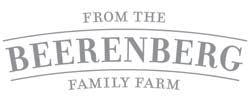
Conservation works at Hughes' Engine House at Moonta Mines.
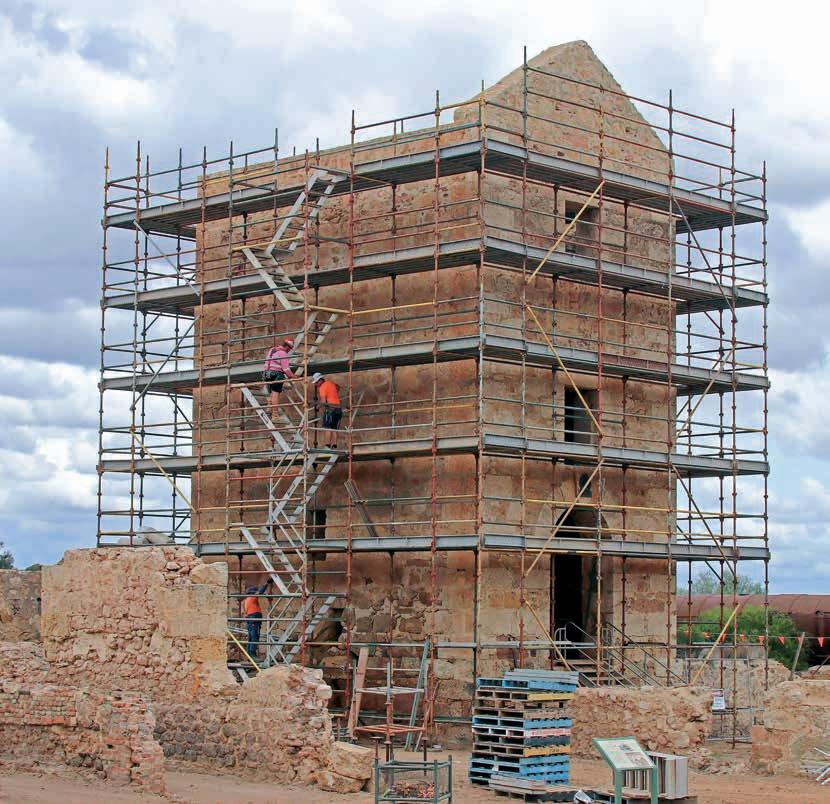
The National Trust of South Australia is a community-based membership organisation established in 1955.
We work to preserve, protect and promote our built, natural and cultural heritage with the support of our members, volunteers and supporters.
The National Trust acknowledges the traditional owners of the country throughout South Australia and their continuing connection to land, sea and community. We pay our respects to them and their cultures and to their elders past, present and emerging.
National Trust of South Australia
Beaumont House 631 Glynburn Road Beaumont SA 5066 T (08) 8202 9200 admin@nationaltrustsa.org.au www.nationaltrust.org.au/sa
ABN 45 432 652 725